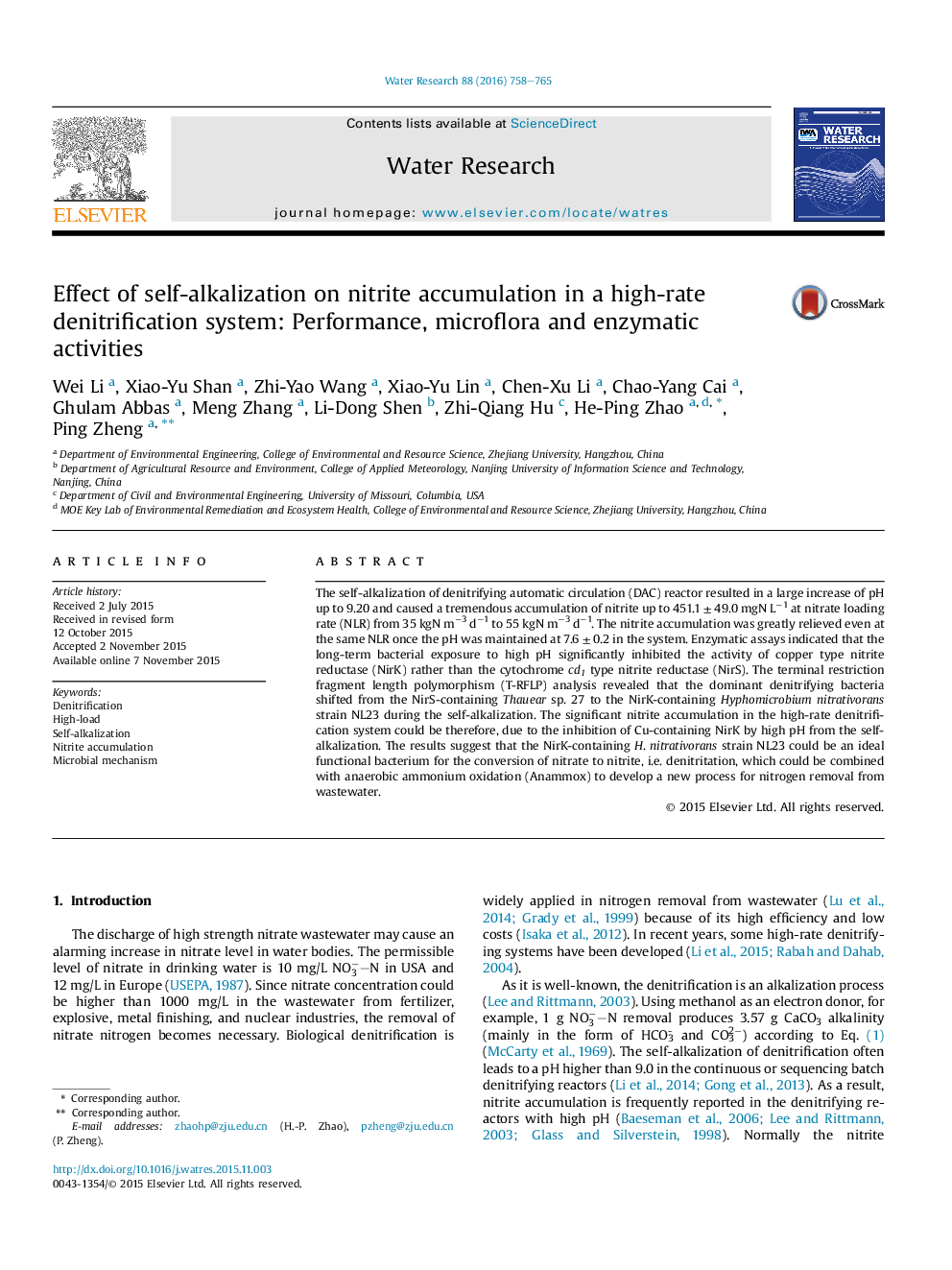| Article ID | Journal | Published Year | Pages | File Type |
|---|---|---|---|---|
| 6365565 | Water Research | 2016 | 8 Pages |
â¢22.3% of the influent NO3â accumulated as NO2â in high-load denitrifying system at pH of 9.2.â¢NO2â accumulation vanished once pH was adjusted to neutral value in high NLR system.â¢Hyphomicrobium replaced Thauera as dominant genus after long-term exposure to high alkalinity.â¢High pH caused a signiï¬cant inhibition to the activity of NirK rather than NirS.
The self-alkalization of denitrifying automatic circulation (DAC) reactor resulted in a large increase of pH up to 9.20 and caused a tremendous accumulation of nitrite up to 451.1 ± 49.0 mgN Lâ1 at nitrate loading rate (NLR) from 35 kgN mâ3 dâ1 to 55 kgN mâ3 dâ1. The nitrite accumulation was greatly relieved even at the same NLR once the pH was maintained at 7.6 ± 0.2 in the system. Enzymatic assays indicated that the long-term bacterial exposure to high pH significantly inhibited the activity of copper type nitrite reductase (NirK) rather than the cytochrome cd1 type nitrite reductase (NirS). The terminal restriction fragment length polymorphism (T-RFLP) analysis revealed that the dominant denitrifying bacteria shifted from the NirS-containing Thauear sp. 27 to the NirK-containing Hyphomicrobium nitrativorans strain NL23 during the self-alkalization. The significant nitrite accumulation in the high-rate denitrification system could be therefore, due to the inhibition of Cu-containing NirK by high pH from the self-alkalization. The results suggest that the NirK-containing H. nitrativorans strain NL23 could be an ideal functional bacterium for the conversion of nitrate to nitrite, i.e. denitritation, which could be combined with anaerobic ammonium oxidation (Anammox) to develop a new process for nitrogen removal from wastewater.
Graphical abstractDownload high-res image (267KB)Download full-size image
